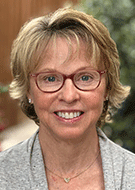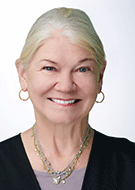From Chaos to Cohesion: The Art of Integrating Radiology Group Cultures in a Merger-Driven Market
Compatibility and communication crucial to successfully merging practice cultures


This is the first in a series of RSNA News articles addressing issues facing private radiology practices. Read the second and third stories in the series.
The shift to managed care in the U.S. has led to insurance companies, health care systems and hospitals growing ever larger, as well as an expectation that subspecialties provide 24-hour services.
As a result, small radiology groups that provide services with limited scope and availability maintain less negotiating power.
In addition, radiology as a tech-dependent specialty requires significant capital to continually acquire new technologies.
These factors have created a “perfect storm” wherein many radiology groups merge to combine resources and ensure their survival. Yet, workplace cultural norms between groups can make mergers difficult for staff. Leadership has a responsibility to smoothly combine two cultures while minimizing discord.
Key Compatibility Indicators
According to Cynthia Sherry, MD, radiologist at Radiology Associates of North Texas in Fort Worth, TX, the most important cultural difference to watch out for when merging two groups is work ethic.
“Having a culture where time off is valued versus a culture where maximizing professional income is valued are two equally legitimate philosophies,” Dr. Sherry said. “But if you try to put them together, that doesn't work well.”
She also pointed out that leadership cultures of both groups should be similar, and that merging a practice that is led in an autocratic style with one that favors a democratic style may inevitably produce conflict.
The management of external relationships must also be considered, such as how each practice works with their referring physicians or hospital administration.
“Some groups have the attitude that radiologists know best and they're going to be the ones who decide how and when things are going to happen,” Dr. Sherry said. “In other groups, when a referring physician tells them to jump, they ask, ‘How high?’”

Inclusive Due Diligence
In order to determine the compatibility between groups, it is recommended that they meet early and often to find out as much as possible about each other’s cultures. These preliminary conversations, said Dr. Sherry, are not unlike dating.“When you first meet, everyone is on their best behavior and they're saying what you want to hear, just like on a first date. Then on the second date, you notice a few things that you don't like, and on the third date, you may be feeling better about it, or you may realize that a relationship is going to be hard,” she said. “Groups should spend a lot of time with each other— meeting multiple times—in order to really get to know each other.”
When it comes to how different radiology practice cultures can be, Catherine Everett, MD, MBA, managing partner of Coastal Radiology PLLC in New Bern, NC, explained that each radiology practice has its own norms in regards to procedures, communication, working with support staff, and reporting, to the extent that another practice can feel like another country.
Therefore, a “getting to know you” phase should include everyone, Dr. Everett said.
“These preliminary discussions about culture and vision must include everybody. It cannot be just the leadership team,” she said. “Whether it’s having some kind of focus groups, or surveys, so that everyone in the process feels like they have contributed and have had some say in what happens.”
Dr. Everett explained that these discussions should be wide-ranging and go beyond the balance sheet to include everything from covering call to support staff needs, and which subspecialties will be offered by the new group.
She also emphasized that where resources allow, it is recommended to hire a consultant to facilitate and provide analyses on these conversations.
Communication That Guides Through Chaos, Builds Unity
Regardless of due diligence, the nature of a merger is that the initial period afterward will be difficult as the new workplace culture is constructed.
“After a merger, operations, assignments and expectations all begin to change,” Dr. Sherry said. “For a while, nobody seems to know what's happening. But if your leadership has done things right, you'll emerge from the chaos phase into the integration phase, where you feel more positive about the direction the new group is taking.”
To move into this integration phase, Dr. Sherry said that frequent and bidirectional communication between leadership and staff needs to happen. Radiologists must be heard by leadership, and have their pain points addressed.
In terms of building a unified culture between new partners, Dr. Everett said that establishing communication mediums that are easy to use can facilitate new group cohesion.
“Whether it's a chat function on the reading platform or a mobile phone group chat, have some way that subspecialty groups can communicate and get to know each other,” she said. “Big social events or mandatory business meetings have their place, but they won’t make people feel like they're part of one entity like a dedicated communication space will.”
Signs of Success
Dr. Sherry said that it’s not easy to know when a merger has successfully combined two cultures together, but that it’s very clear when it hasn’t.
“Signs of an unsuccessful merger are decreased productivity, decreased work quality, squabbling between colleagues or people calling in sick often,” she said.
Dr. Everett said that many metrics can be used to measure a merger’s success, but that radiologists’ job satisfaction is the most important one.
“There are all sorts of ways to measure the success of a merger, including finances, service quality, and satisfaction of hospital administrators, but ultimately the most important measure is whether the radiologists are happier at work,” Dr. Everett said. “If they are, then all of those other measures will follow. If they aren’t, then it's not a successful merger.”
For More Information
Read previous RSNA News articles related to the radiology workforce: